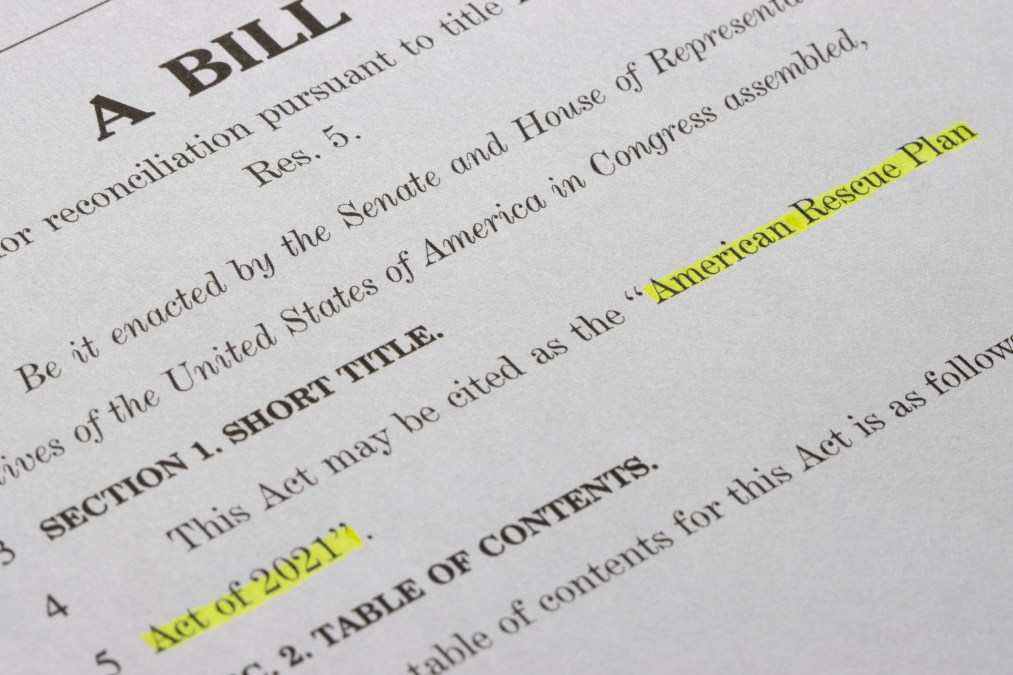West Virginia ‘one-stop shop’ helps communities follow ARPA rules

Officials in the the West Virginia State Auditor’s Office say the state is creating a digital “one-stop shop” to help local governments — some of which still maintain their accounts with pen and paper — comply with the American Rescue Plan rules.
Local governments within West Virginia were granted $2.06 billion in federal aid through the Rescue Plan last March, though the U.S. Department of the Treasury only issued its final guidance for how municipalities can spend those funds last month. And for many of West Virginia’s smaller communities, Deputy State Auditor Anthony Woods told StateScoop, the federal aid is more money than they’ve ever had to invest in infrastructure, mental health, public health and other issues faced by Appalachian communities.
“We’re facing a situation where we have a lot of local governments who have a lot of money they’ve never had before, they’re not sure how to spend it and they’re faced with reporting requirements and audit requirements that they might not have faced before,” Woods said.
Unlike federal funding from the CARES Act, which allowed localities to simply apply to the state governor’s office to receive federal aid as reimbursement, the Rescue Plan provides federal aid up front, Woods said, and could trigger audits for communities that receive more than $750,000 in aid. The funding also comes with new reporting requirements and rules on what municipalities can spend it on. That’s where a new database that Woods’ office has been developing will help, he said. Rather than ask hundreds communities to keep track of their Rescue Plan spending and the federal government’s requirements, the state will do most of the work for them, he said.
“We’re getting ready to release this software, and we were waiting on the final rule from the U.S. Treasury,” Woods said. “What they’ll be able to do with that is just have a place where they can put in some of this information and have a one-stop shop to have that information available to them and store it.”
Woods said the auditor’s office has provided communities with a database “with some programming behind it” that they can enter in their expense reports, timelines and other financial data associated with their Rescue Plan funding in a format that meets federal reporting requirements. While not all local governments in the state can afford large enterprise resource planning systems to keep track of their spending, most are able to run a database, Woods said.
The work on the database was done in-house, Woods said, though the state may eventually expand it. For now, however, the most important thing is to allow towns to clearly show how they’re using their federal aid — like in Wheeling, West Virginia, where town officials are replacing centuries-old wooden pipes, originally built when West Virginia was still just Virginia.
“West Virginia has a lot of needs. Mental health needs, infrastructure needs, public health needs, and our goal with this transparency is to not only keep our local governments accountable with what they’re doing with this money, but to assist them with that treasury reporting and to really highlight the needs that West Virginia has in a way that we don’t think any other states are doing,” Woods said.
The database will also maintain the data for West Virginia’s own financial transparency portals, Woods said.
“We don’t know what it’s eventually going to look like in other states, but what we want is our congressional delegation to go out in Congress and and be able to go out onto the floor and say, ‘This is what West Virginia did with the ARP funding, and this is what their needs are, and this is why this really benefited West Virginia and why our local governments banded together to really impact their community.’”






